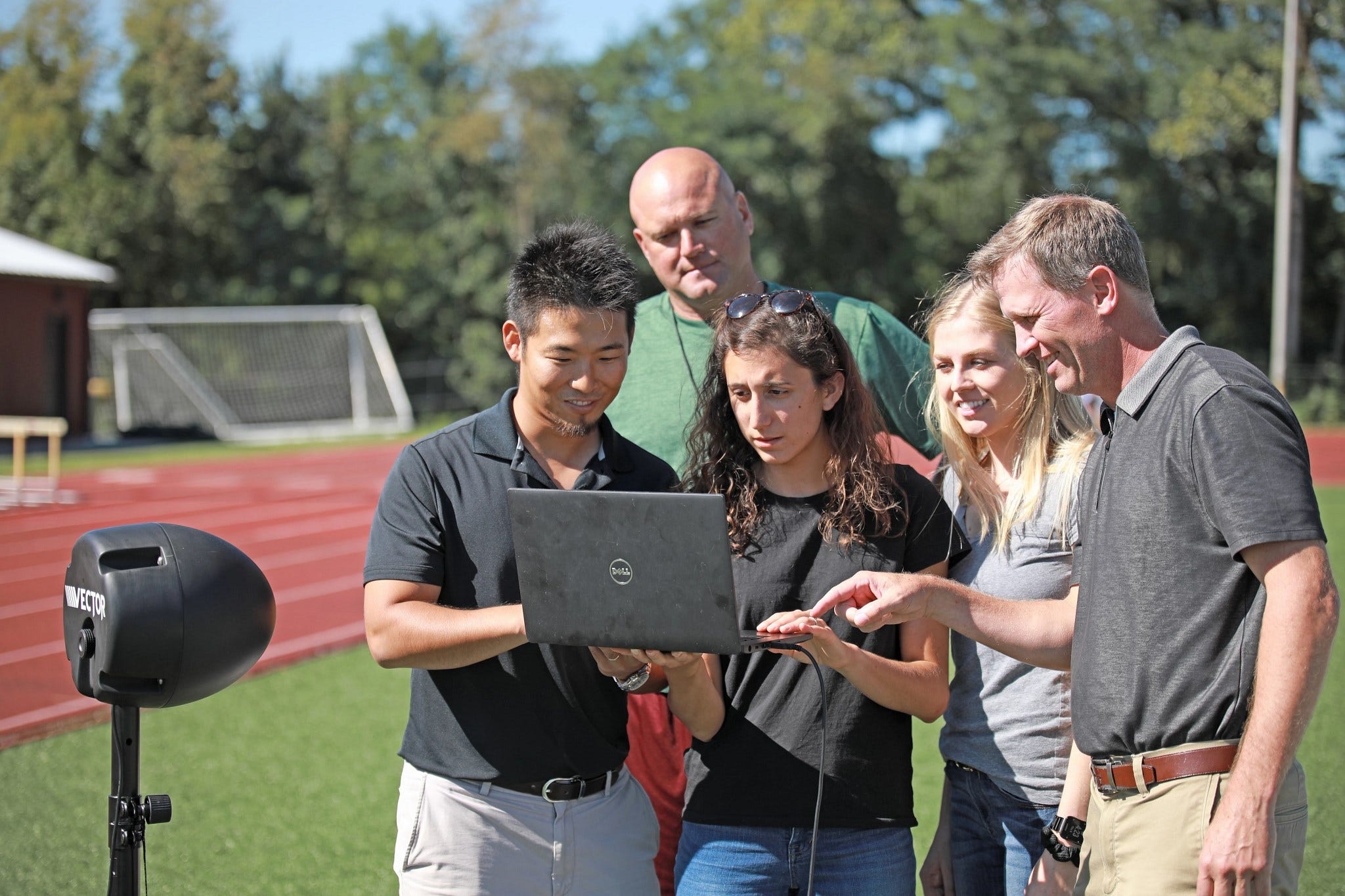$3M IU Study Tackles Young Football Players’ Head Impacts
 Kawata and his team conducted three pilot studies to earn the grant this larger magnitude study.
Kawata and his team conducted three pilot studies to earn the grant this larger magnitude study.
Subscriber Benefit
As a subscriber you can listen to articles at work, in the car, or while you work out. Subscribe NowConcussions capture headlines, and they’re noticeable on the sidelines when a player is suddenly disoriented or has blurred vision. But an Indiana University researcher has long been concerned about the cumulative effect of more elusive injuries for young people: subconcussive head impacts. With no symptoms and caused by seemingly harmless hits, subconcussive head impacts have been somewhat neglected in scientific research, says IU Assistant Professor of Kinesiology Dr. Keisuke Kawata. He’s working to turn the tide with a $3 million grant to establish a line between harmless and harmful subconcussive impacts for adolescents, and more than 100 Indiana high school football players are volunteering to help.
“A head impact that doesn’t cause any symptom is defined as a subconcussive head impact. The ‘sub’ means under the threshold of a concussion. You don’t feel any problem,” says Kawata. “That’s why it’s scary; there are no overt symptoms, so players feel totally fine to continue [playing]. But there’s growing evidence in our studies and others, so people are starting to uncover a micro effect adding up.”
Boosted by a $2.9 million grant from the National Institutes of Health, Kawata is leading a four-year study that will follow more than 100 football players at a handful of high schools in Bloomington and on the south side of Indianapolis. Kawata says there are two key goals for the study. The first is to establish a “threshold” for subconcussive impacts: what amount of hits quantify a safe or unsafe exposure.
“I personally believe 100 hits over the course of six months—one season—are not a big deal, because your brain is very plastic; the body has some mechanisms to mold, develop and heal the brain,” says Kawata. “But if you sustain so many more hits, that’s not safe. However, we have no clue how many [subconcussive] head impacts are generally safe or not safe, in terms of the neurological deficits. So this threshold-setting is one purpose.”
Kawata aims to set a threshold for safety specific to adolescents; his study will focus on football players between the ages of 14 and 18. Kawata says young players are of special concern, because they have more severe symptoms from head impacts, their recovery rate is slower, and their brain is still developing, so “if you sustain trauma, the effect can be a little bit more severe.”
The second goal of the study is to further validate neurological biomarkers that indicate the brain is experiencing stress. Kawata says if the biomarker exceeds a certain level, that could be a red flag. The biomarker can be detected in the blood, so blood samples will enable Kawata’s team to analyze it for the study; in the future, he envisions simple finger pricks or players wearing patch-like monitors that could measure the biomarker.
“These blood biomarkers are proteins that come from the brain. They should stay in the brain if your brain is fine, but if they leak out of the brain and you can detect them in the peripheral circulatory, that tells us something,” says Kawata. “[That biomarker] tells us how much of the brain is experiencing stress. This establishment of a biomarker is critical to prevent further injuries.”
Kawata and his team will use several cutting-edge tools to analyze the football players’ brains throughout the study. He plans to recruit 120 to 140 high school players from Bloomington High School North, Bloomington High School South, Edgewood High School and Mooresville High School during the upcoming football season. Each athlete will wear an extremely high-tech mouthguard that records every single head impact and tracks linear and rotational head movement. The researchers will also use advanced systems to track eye movement and state-of-the-art neuroimaging tools that show cellular structural properties, “so we can really tell if there’s micro-structural damage to those cell neurons.”
“We think there’s going to be dose intensity-dependent change; the more hits—and the more strong hits—you sustain over the course of one season, the greater [neurological] change we’re going to observe,” says Kawata. “At the same time, we believe subconcussive impacts are more magnified if you cumulate them over the course of several seasons. We believe those who sustain so many impacts, such as more than 600 hits, [will have] some sort of additive effect as time goes by.”
Because it’s a four-year study, the researchers will be able to track some players from their freshman year through their final senior season. Kawata says, while some may assume the study aims to “demolish” football, he’s adamant about the research team’s passion for the sport; Kawata previously worked for both the NFL’s Detroit Lions and the MLB’s Atlanta Braves.
“This investigative team loves football. We’re going to [establish] some sort of thresholds that are very practical for policy making and guidelines. If we can provide information such as, ‘This many hits are safe for adolescents: don’t worry about those hits. As long as you monitor head impacts, he can play’—that’s an important message to provide parents,” says Kawata. “And there’s a great message for players too; [IU research] is cutting-edge, so the [study participants] aren’t just playing football, they’re contributing to society and public health at large.”
Kawata expects the data will show a clear picture after two seasons, so the team is already considering its next big goal: how to protect players.
Kawata says the grant aims to determine what number of subconcussive hits is related to significant microstructural damage in the brain.
